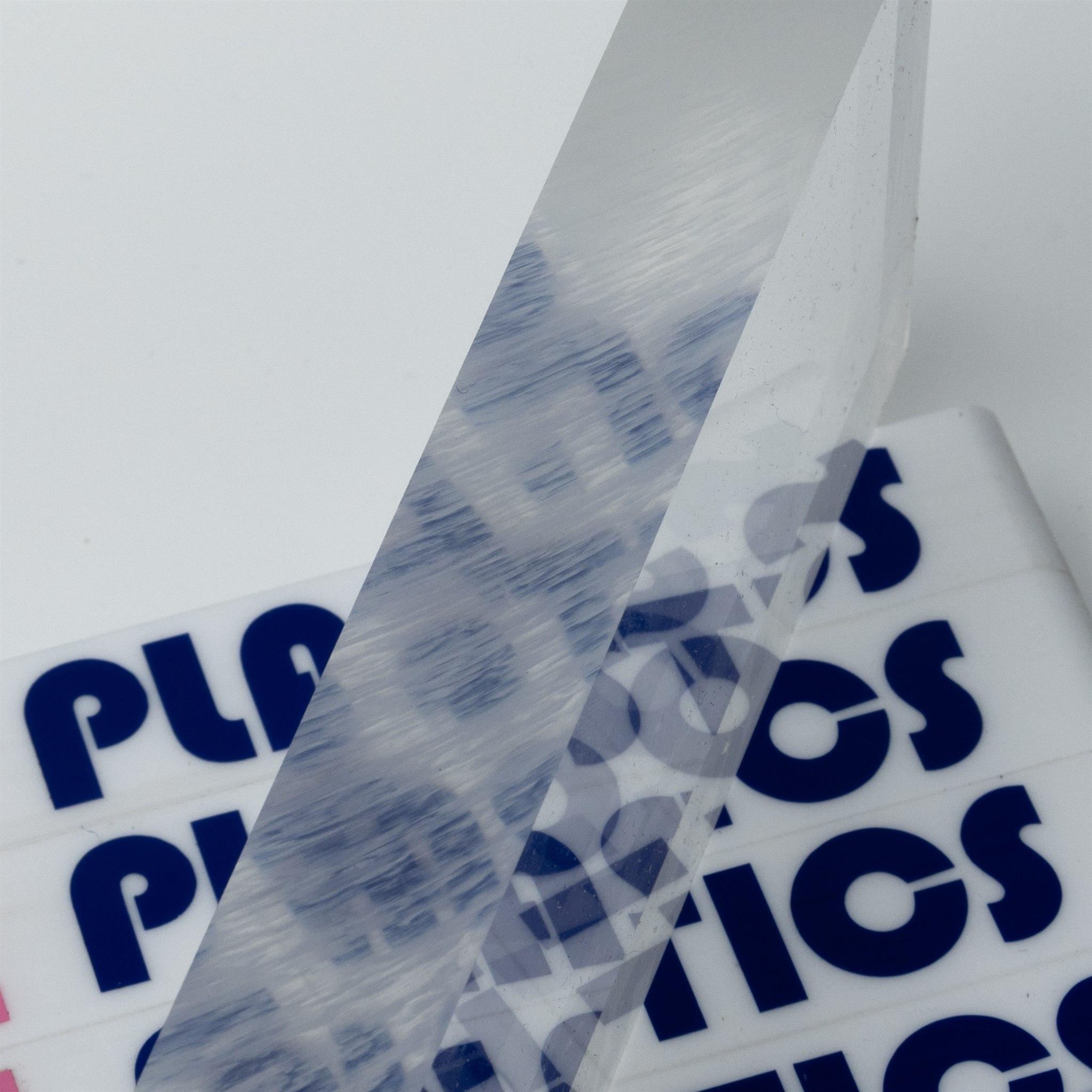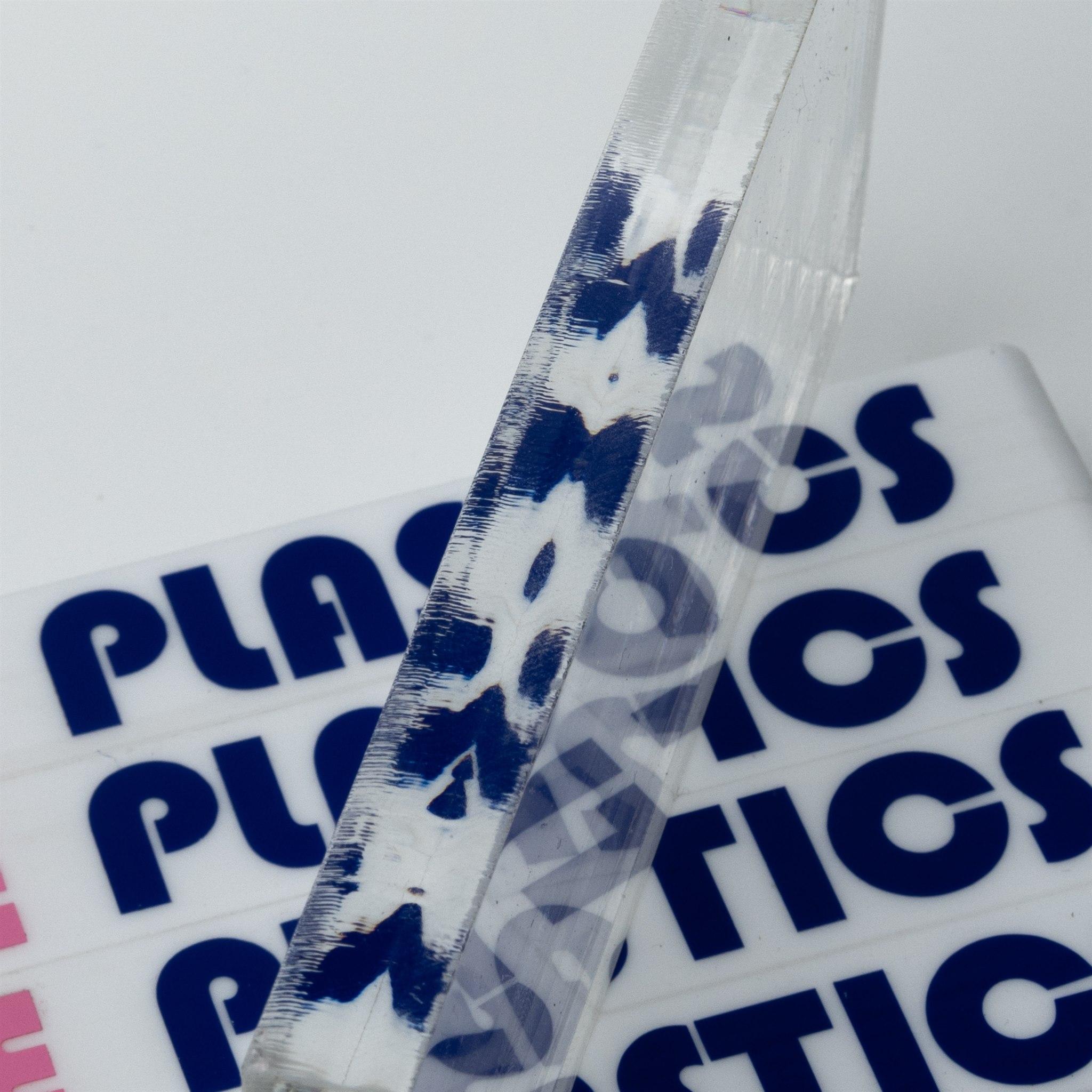
Expect Delays: Due to supplier and courier shutdowns over the holiday period, there may be delays on orders placed during this time.

Expect Delays: Due to supplier and courier shutdowns over the holiday period, there may be delays on orders placed during this time.
Acrylic
Polycarbonate
Clear Rods and Tubes
HDPE
PVC Foam
Composite Aluminium
High Impact Polystyrene
Corflute
uPVC
Twinwall Roofing
Engineering Rods
Polycarbonate is an impact resistant plastic available in clear, opal and tinted grey, in a wide range of thicknesses and sheet sizes. Clear polycarbonate is also very clear, letting through about 90% of visible light, and is popularly used in place of glass and other plastics requiring transparency due to its high impact strength at 250 times that of glass. Polycarbonate can be molded, cut, heat bent, and machined to suit almost any requirements.
All our polycarbonate sheets have virtually an unlimited life indoors, but are also UV stable and suitable for outdoor use, with a life expectancy of about 8-10 years before the material begins to deteriorate, becoming more brittle and marred. Fabrication can sometimes reduce the outdoor life expectancy as this often creates internal stresses in the plastic, this can be ameliorated through taking the extra measure of annealing the component after fabrication.
Polycarbonate is usually 30% more expensive than its acrylic counterpart but can be machined and drilled without worrying about cracks due to its impact strength. Polycarbonate is slightly more prone to scratches and abrasions compared to Acrylic.

Polycarbonate can be drilled easily at home with no risk of cracking using HSS (High speed steel) drill bits. Avoid using woodworking and masonry bits, and keep your drill off hammer mode.
Polycarbonate can be fixed mechanically with almost any fixing without risk of cracking. Screws, rivets and bolts are all suitable, you may also pre drill to a screw tapping diameter so that your fixing screw actually engages with the plastic when driven. This could be useful for screwing accessories to a polycarbonate sheet.
For adhering polycarbonate to most surfaces, liquid nail is a strong adhesive that bonds to a wide variety of materials, it’s readily available at your local Bunnings or hardware store. For adhering polycarbonate mirrors look for the liquid nail marked with “Does not discolor mirrors”.
For welding polycarbonate, the most widely used adhesive is a chemical agent we call PLASBOND which fuses two panels together. PLASBOND is a low viscosity liquid which is usually applied with a syringe or a needle point squeeze bottle.
Cutting polycarbonate can be achieved with most power tools, for example panel saws, jigsaws, circular saws and even an angle grinder. When cutting thin polycarbonate stock, take care to prevent violent vibrations when cutting close to the edge of the panel, although polycarbonate is tough, it can still crack and splinter during machining of thin stock.
When Polycarbonate is cut, the cutting blade leaves visible abrasions on the edge of the finished piece as well as sharp edges. The sharp edges can be easily dulled down with a deburring tool, but achieving a visually appealing edge finish requires a bit more effort.
Polishing is the process of bringing a rough edge of a workpiece back to a shiny clear appearance almost identical to the clear face of the panel. This can be achieved with a few different processes and technologies.
Generally edge polishing is only required for parts in the public eye like signage, displays and decorations, and even then only if you deem it necessary. Also consider the thinner the workpiece, the less visible the edge will be. Before we go into some of the different polishing options available here are some examples of tooling marks left behind by different machining processes:

Polycarbonate is not suitable for laser cutting beyond a thickness of 1mm. Polycarbonate absorbs infrared radiation very well, meaning the material tends to burn, catch fire and discolor when exposed to the laser beam.

Diamond polishing machines strip away a small portion of the edge surface using very stable diamond tipped tools which are so sharp that they do not leave abrasions when performing this process. With no abrasions, the edge is returned to a high-gloss and transparent finish. Diamond polishing can only be used on flat and straight edges.

Sanding the workpieces serves to reduce the abrasions from the cutting tools down to very fine imperfections by gradually increasing the grit of sandpaper used. Finally a buffing wheel is used along with a buffing compound to lightly melt away the fine imperfections down to the naturally glossy and transparent polished edge finish. This method is suitable on square or radiused workpieces with beveled or curved edges.
Ballistic grade polycarbonate is made from layers of acrylic and polycarbonate laminated together to meet a higher standard of blast and ballistic protection. Exact specifications differ depending on manufacturer but 19mm ballistic grade polycarbonate can typically stop a 9mm full metal jacket lead bullet with no penetration. Typically this grade of plastic is only needed for glazing in financial institutions, government buildings or prisons.

Mar resistant grades of polycarbonate have a coating applied on 1 or 2 sides which improves the resistance to abrasions or marring. Commonly available in 3, 6 and 10mm thick, Mar resistant polycarbonate can improve the haze left by abrasion by up to a factor of 10 according to taber abrasion testing which spins an abrasive wheel on the surface of a material with a constant pressure of about 500g. In practical applications however there isn’t often a discernible difference between regular polycarbonate and AR polycarbonate.
